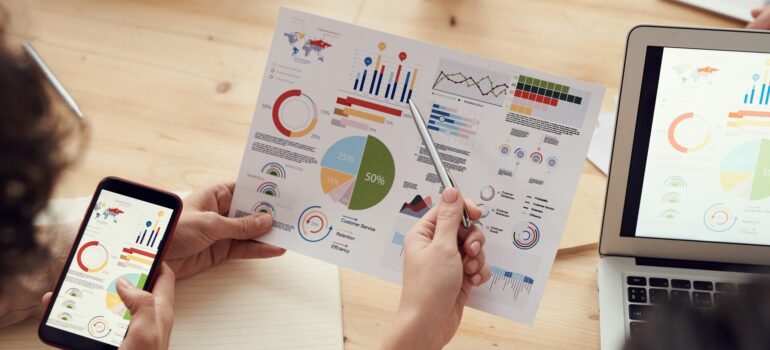CDP vs CRM software – what’s the difference
Book Your Demo
Gathering customer data has become a necessity in modern business practice. No matter how large your business is, or whether you provide a service or a product, you need to gather customer data. Doing so is not only important for better customer relations. But also for marketing and data-driven business decisions. While all this stands as a fact, people are still unsure of how to gather and manage customer data. One of the common misconceptions comes with comparing CDP vs CRM software and their use. So, to help shine some light on this subject, we are going to explore the difference between Customer Data Platforms (CDP) and Customer Relationship Management (CRM) and when to use each software.
The main difference between CDP vs CRM software
While these two seem similar at first glance, there are some important differences to keep in mind. The most notable difference, out of which all the other differences stem from, is that CRM is more geared towards analyzing customer-facing interactions while CDP is geared towards studying customers’ online behavior. While there is no clear-cut border between the two, they are distinct enough to require different software.

In CRM’s case, software servers to help manage customers. Therefore, the main purpose of it is to provide customer management agents (or sales teams) the necessary info. When set up properly, CRM ensures that customer interactions are smooth, purposeful, and efficient.
CDP serves to gather more robust, long-term data. When utilized effectively, CDP helps you understand your customers better. This deeper understanding helps you improve your marketing strategy and make solid business decisions.
Difference in gathering
While there are different ways to gather both CRM and CDP data, the simplest way to outline the difference is that CRM data is gathered manually, while CDP is gathered automatically. Now, of course, there are certain parts of CRM data that you can automate. And there are certain aspects of CDP that rely on manual input. But, the most straightforward way to separate them is manual vs automated.
In the case of CRM, you are usually trying to figure out as much as possible about an individual customer. Once your company representative starts talking with them, they need to know what the customers are like. The information that they gather while interacting with the customers is essential for any future interactions. But, as you can imagine, this type of information can only be input manually by the agent.
How companies use CRM
Before we delve into this, it is important to note that CRM systems can be quite robust. Enterprise companies use large-scale CRM systems with intricate software and high-end processing capabilities. On the other hand, smaller companies tend to stick with small-scale CRM systems, as it is far more cost-effective on a smaller scale. Therefore, while we will try to concise sum up how companies use CRM, know that there can be substantial differences between individual companies.

An effective CRM system is based on customer service needs. Depending on the nature of your business and the structure of your company, these needs can vary quite a bit. But, in most cases, you can separate them between sales needs, and customer management. In the case of sales, agents need to have easy access to customer info. By having it at hand, they are able to make the right offer at the right time and ensure that their sales have a high success rate.
In the case of customer management, companies use CRM to make aiding customers’ needs easier. Here you can usually see a fair bit of automation, as customer needs tend to be generic. A well-made FAQ page is largely dependent on CRM data and customer management experience. Even chat-bots can be an extension of your CRM, as they serve to calm stressed-out customers, or even help them solve simple problems.
How companies use CDP
The main use of CDP is for data-driven company decisions. Say, for instance, that a company needs to make a new business decision. Should they base their decision on current industry trends? Should they try to ask their customers? Or should the person in charge go with the gut feeling? The truth is that there is no easy answer. Any serious company first tries to gather as much data as possible in order to come up with a wise decision. And seeing that modern companies live or die based on customer satisfaction, it shouldn’t come as much of a surprise that CDP data is vital.

By carefully monitoring CDP data over long periods of time you can get a good idea of what your customer base is like. This helps streamline your business decisions including marketing, product management, and even branding. When handled properly, CDP helps you keep in touch with your customer base and ensures that none of your company decisions will be out of sync.
Which one should you opt for?
Let’s now assume that you are an upstart company and that you are trying to decide between CDP vs CRM software. Which one should you opt for? Well, it depends on what your company is based on. If you have a simple product and you merely want to increase your customer base, we suggest that you use CRM. It will greatly help with customer management and with finding new leads. But, if you are still developing your product/service, and you want to get pointers on where to take it, we suggest starting with a CDP. With it, you will get valuable knowledge of what your customers prefer. Furthermore, you will know how they behave on your website, which can help tremendously with further website development. Of course, as your business takes off and expands, you will need a CRM system.
Stay Informed
Subscribe for industry
news & updates
"*" indicates required fields
